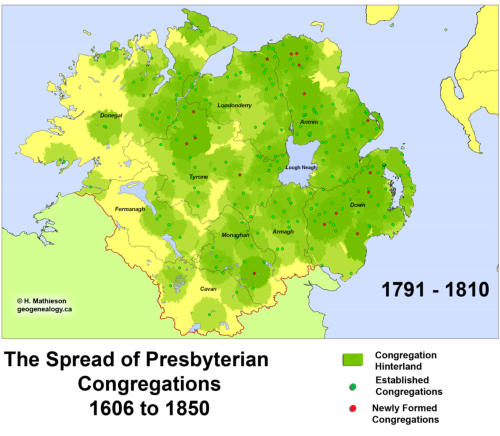


© J. H. Mathieson

Regardless of your experience, researching your Ulster Scots
roots will not be easy. While you can use all the conventional
genealogist’s tools, Ulster research presents unique
challenges.
First you should be aware of the problem with the availability
of Irish records. The four courts fire in 1922 destroyed a
treasure trove of records. Census’s, wills, birth, death,
marriage records, all were largely lost.
Fortunately some records survived, The 1901 and 1911
censuses, and fragments of those from 1851 - 1821 survived.
Additionally “census substitutes” like the mid 19th century
Griffith valuation exist and can provide valuable clues.
Individual parishes and organizations have local resources
which are increasingly coming on line.
The second hurdle is time. If your ancestors left in the 19th
century your task will be easier. Once you get beyond the
19th century the mists of time will cloud your view.
Where do you start?
You may have family lore, a bible, a headstone that provide a locational clue, a townland name, a parish, even a county name that can steer you in the correct direction. But time is still the enemy. For many researchers their ancestors left Ulster in the early 18th century. Other than the fact that they may have passed along the knowledge that they were “Scots Irish”, “Scotch Irish”, or simply from Ireland, finding your ancestors home will be a difficult task. It will be akin to tracing a person who has gone into witness protection! DNA is increasingly becoming a valuable tool for Ulster researchers. YDNA, which passes along the male line, along with mitochondrial DNA, can provide valuable clues pointing to your ancestry. But it doesn’t fill in all the blanks. In combination with old fashioned leg work, and with a dual documentary/DNA approach, it’s may still be possible to find the homeland of your ancestors. Get your YDNA, or that of a male ancestor tested and join a YDNA surname study. You should also immerse yourself in Ulster’s unique history. Your ancestors were shaped by both their cultural experience in Ulster and Scotland, as well as by the forces that caused their ultimate mobility. An appreciation of Ulster’s history will enrich and assist in the search for your ancestors. A section of this web site lists a range of excellent historical references authored by leading Ulster scholars. Which brings us to the focus of this web site. For lack of a better term we might call it GeoGenealogy, a combination of genealogy, history, geography and surname studies. You should develop an understanding of surname theory and let it assist you in you quest. Like YDNA, surnames are generally passed along the male line. If your surname is moderately rare, or even if it has a “normal frequency”, it can be an important tool in the search for your elusive Ulster ancestors. We hope you find the resources on this site helpful in your search for origins. Good luck in your quest!Welcome to the Scots Irish GeoGenealogy Web page!
Scots Irish
GeoGenealogy
GeoGenealogy

GeoGenealogy



© J. H. Mathieson
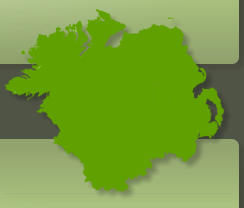
Size can be Deceiving!
Geographic perspective can often be misleading. Can you
imagine how our ancestors must have viewed the new world
with its immense space? Or how their descendants are deceived
by the size of the home country? The following graphic will put
things in perspective. If you ever wonder how could I ever find
the homeland of my ancestors in Ulster or Scotland? Well,
compare their sizes with that of a typical state, North Dakota
for example. The area of Scotland or Ireland cover less than 1/2
that of this solitary State. Ulster covers less than 12%. If your
ancestors were from Antrim, it covers 1.6% of the area of
North Dakota. The job is half done! Just find the
neighbourhood!
We hope this put things in a different perspective when asking
the question, “where did my ancestors come from?”
Happy hunting!
Scots Irish
Geogenealogy
GeoGenealogy


GeoGenealogy

GeoGenealogy

© J. H. Mathieson

Map Viewing Instructions
Displaying map images:
Viewing a slide show: • When viewing a large scale map, a set of controls appears at the bottom of the map. Select the symbol to advance and view the next map on the page. Use the to view the maps in reverse order. • The sides can be viewed automatically by selecting the ► symbol. The maps will be viewed sequentially at three second intervals. • To stop the Slide show at any point click the symbol. • To resume the slide show select the symbol again. In most devices a slide strip appears at the bottom of your browser screen. Images can also be selected by clicking on a thumbnail. • If you can’t see the slide strip, reposition a large scale map in your viewing window by holding your left mouse key on the image and drag. This will allow you to view the slides in any order.
Saving a map image:
If you want to copy a map, select the large scale
map. In the Windows OS right click on the image
and select “save picture as.”
If you are using a tablet, touch and hold your finger
on the image and select save.
Scots Irish
Geogenealogy




GeoGenealogy

© J. H. Mathieson

County maps for Scotland are also available from the
Internet Archive. They are also high
resolution images illustrating
transportation networks, cities,
towns, and villages. The maps include
parish boundaries and a key to the
parish names. Use the magnifying
glass in the lower right corner to
enlarge the map until the details are
completely clear. Then right click on
the image to copy. The example to the
right is a lower resolution image of Ayrshire.
The David Rumsey Map Collection has a wide range
of maps covering Scotland and
Ireland. They are of particular
value because of the extremely
high resolution scans used for
each map. There is no other map
site providing downloadable
maps of this quality.
David Rumsey’s Composite Ayrshire:
The Rumsey collection is a
remarkable resource. Each map
image can be viewed with
clarity and detail. The Ayrshire
map, part of the Thompson
Atlas, drawn in 1832, pre-dates
the railway era. Roads, buildings, woodlands and
particularly minor place names and features are detailed.
To download a copy of Rumsey maps, double click on the
export link in the upper left corner and select a range of
map sizes.
The Rumsey collection also has a
wide range of national scale
maps of Scotland covering
different eras. This example, “The
Southern Sheet,” dates to 1879 and
covers all the lowland counties.
A composite map of Ireland: The map was originally
published by John Griffith to augment the second report of
the Railway Commissioners in
1837. The cartography is
stunning and the map uses hill
shading to great effect
providing the viewer with a
birds eye view of Ireland.
Despite covering all of Ireland, the detail is still
outstanding.
The Society for the Diffusion of Useful Knowledge:
The Society was founded in London in 1826 with the goal
of publishing information for people who lacked access to
formal education. The maps of Northern Ireland and
Scotland are uncluttered, yet detailed enough for a good
understanding of the regions. Place names, landscape and
water features, major and minor road networks, all dating
to 1838 are illustrated in excellent detail.





Scots Irish
Geogenealogy
GeoGenealogy
Map Resources
Detailed County maps of
Ireland can be downloaded from
the FamilySearch website. The
maps are extremely useful in
Ulster research. The example to
the right of County Fermanagh
is typical. (Click thumbnail to
enlarge).
The entire Lewis Atlas can be downloaded in PDF format
from the Internet Archive. The maps are extremely high
resolution images and would be suitable for printing and
framing. The book is slow to download because of the
number of PDF pages, but well worth the wait.




GeoGenealogy

GeoGenealogy

© J. H. Mathieson

Slide Show: The spread of Presbyterians in Ulster1606 - 1850
Viewing a slide show:
•
Map images are displayed by selecting the blue link
associated with the map description. To close the small map
image, left click anywhere on the screen.
•
Each map can be enlarged by clicking on the small image.
To reduce the image size, click again. A large map can be
removed by clicking the mouse anywhere on the map, or on
the X in the upper left corner of the map.
•
When viewing a large scale map, a set of controls appears
at the bottom
of the map. Select the symbol to advance
and view the next map on the
page. Use the to view the
maps in reverse order.
•
The sides can be viewed automatically by selecting the ►
symbol. The maps will be viewed sequentially at three second
intervals.
•
To stop the Slide show at any point click the symbol.
•
To resume the slide show select the symbol again.
In most devices a slide strip appears at the bottom of your
browser screen. Images can also be selected by clicking on
a thumbnail.
•
If you can’t see the slide strip, reposition a large scale
map in your viewing window by holding your left mouse key
on the image and drag. This will allow you to view the slides
in any order.
Scots Irish
Geogenealogy


Scots Irish
Geogenealogy
GeoGenealogy
GeoGenealogy
The 1901 Census of Ireland is the foundation for
Ulster surname research. It and the 1911 census are
the most complete censuses of the Irish population.
The remaining censuses 1841 -1891, were either
burned in the Four Courts fire of 1921, or as in the
case of the 1881 Census, simply was lost. Fragments
of the 1821 to 1851 Census are also indexed. The 1901 Census is extremely
comprehensive in nature. While it does not include family structure, it can
often be inferred from an analysis of the town land level data. The site
provides a valuable set of search options and guidelines.

M.C. O’Callaghan’s Using the 1901/1911 Irish Census is a highly
recommended resource, particularly if you are not familiar with the
content of the census and how it can be used. The amount of information
in the 1901/1911 Census is surprising. Even more interesting is the ability
to drill down and see which townland is included in each District Electoral
Division. The book is available as a Kindle book and is reasonably priced at
$1.32.
The Scottish Migration to Ulster: “was first published in
1973, yet it continues to be one of the most significant works
of scholarship on the 'plantation' of Ulster. This book
describes in detail the initial establishment of settlement in
Ireland's northern province over a comparatively short space
of time, that is from 1603 to 1625. He examines the society
that produced the Scottish settlers, describes the conditions
that they encountered when they arrived in Ireland, and
explains what effect the Scottish migration had in both
Ireland and Scotland. Short biographies of the principal
planters are included and also maps, showing patterns of settlement.” It’s also
available at the Ulster Historical Foundation book store.
Researching Ulster Ancestors: “When the first edition
of this book appeared in 2005 it was quickly recognised as
an essential work of reference for family historians
researching Ulster ancestors in the seventeenth and
eighteenth centuries. It filled an important gap in
providing reliable guidance on sources for perhaps the
most critical period in understanding a family’s links
with the north of Ireland. This is territory where some
family historians fear to tread. But they need not. This
guide opens up avenues for research; drawing attention
to the riches of archives inside and outside of the island of
Ireland, demonstrating the benefit of often undervalued,
rare, even quite unconventional, yet accessible sources – if you know where to
look – which can help document your ancestors back to the 1600s.”
Researching Presbyterian Ancestors in Ireland: “Millions of people
around the world have Presbyterian ancestors from Ireland.
The aim of this book is to help those with Irish Presbyterian
roots find out more about their forebears. It considers the
different strands of Presbyterianism in Ireland and explores
the range of records generated by these religious
denominations and where this material can be accessed by
researchers. Much attention is focused on the
documentation created by individual congregations,
though consideration is also given to the records created by
the higher courts of Presbyterianism and other bodies, as
well as the personal papers of Presbyterian ministers.”
First published in 1966, R. J. Dickson’s Ulster Emigration to
Colonial America, 1718-1775 “remains the acknowledged work of
scholarship on migration in the eighteenth century of a
quarter of a million people from Ulster to the New World.
It combines detailed investigation of the economic, social,
and political background to the exodus with information on
the emigrant trade and an analysis of the motivations and
origins of the emigrants themselves. This new edition
includes a specially written introduction by Graeme
Kirkham, whose researches on both sides of the Atlantic are
reflected in an essay which considers recent advances in the
understanding of this important mass population
movement from Ireland to America.”
Colonial Ulster , the Settlement of East Ulster 1600 -
1641: “In this Landmark Raymond Gillespie reconstructs
the society of east Ulster – the counties of Antrim and
Down – in the early seventeenth century. These counties
formed a distinct region within Ulster and were excluded
from the official scheme for the Ulster plantation. In
remarkable detail – all the more impressive due to the loss
of so many records of this era – the author explores
demographic and economic developments, the emergence of
rural and urban communities, and the tension between
central government and local interests. In doing so, he
reveals a fascinating picture of the strivings of both settlers
and natives to establish a modus vivendi during a period of rapid
change.”
Strabane Barony during the Ulster Plantation: “Under the scheme of
Plantation, Strabane barony was allocated to undertakers from Scotland,
the chief of whom was James Hamilton, 1st Earl of Abercorn.
The settlement here was therefore overwhelmingly Scottish,
rather than English. Chapters in this book look at Strabane
in the pre-Plantation era, the background of the Scottish
undertakers, the development of the town of Strabane, the
impact of the Reformation, and the socio-economic
conditions prevailing in the barony in the early seventeenth
century. First published over 30 years ago, this fresh edition
of The Strabane Barony during the Ulster Plantation, 1607-
41 presents to a new audience the story of the Plantation in
the barony of Strabane. It stands as an exemplar of the way in
which a professional historian and his students can successfully work
together to produce a high-quality publication.“
A Narrow Sea:“Based on the popular BBC Radio Ulster
series of the same name, traces the epic sweep of Ireland’s
relationship with Scotland, exploring the myriad
connections, correlations, personalities and antagonisms
that have, over the years, defined the relationship between
these two spirited neighbours.
Roving freely across the centuries, from the first
migrations of the regions’ intrepid Mesolithic pioneers, to
the grand colonial projects of the Vikings, Normans and
Stuarts, this is the dramatic story of how one culture came
to found two very different nations and, in doing so, project its influence as
far afield as North America and Australasia. In 120 brief and accessible
episodes, A Narrow Sea offers a stirring and panoramic view of a connection
that has shaped the course of history on both sides of the narrow sea.”
The Plantation of Ulster: ”In this vivid account, the
author punctures some generally held assumptions: despite
slaughter and famine, the province on the eve of the
Plantation was not completely depopulated as was often
asserted at the time; the native Irish were not deliberately
given the most infertile land; some of the most energetic
planters were Catholic; and the Catholic Church there
emerged stronger than before. Above all, natives and
newcomers fused to a greater degree than is widely believed:
apart from recent immigrants, nearly all Ulster people today
have the blood of both Planter and Gael flowing in their veins. Nevertheless,
memories of dispossession and massacre, etched into the folk memory, were to
ignite explosive outbreaks of intercommunal conflict down to our own time.
The Plantation was also the beginning of a far greater exodus to North
America. Subsequently, descendants of Ulster planters crossed the Atlantic in
their tens of thousands to play a central role in shaping the United States of
America.”


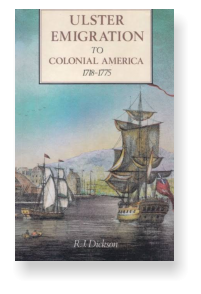
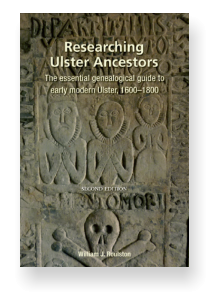

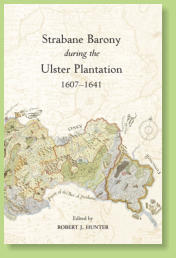


Recomended Reading - Ulster
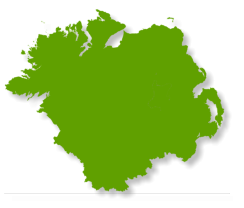
A New Genealogical Atlas of Ireland: “a key resource in Irish
genealogical research, this second edition contains maps
detailing the location of Roman Catholic parishes in all 32
countries of Ireland and Presbyterian congregations in the
nine counties of Northern Ireland. Information collected
here is essential for tracing pre-1864 ancestors in church
records and useful for locating post-1864 ancestors in civil
records, with descriptions and maps of the parochial and
civil administrative divisions to which all major Irish record
sources are linked. To aid researchers in identifying the precise location of
administrative divisions, there are at least four maps for every county,
depicting Church of Ireland parishes, baronies, and Church of Ireland
dioceses, poor law unions and the parishes included within the probate
districts serving that county, and Roman Catholic parishes and dioceses.”

© Mary Wiley Campbell

© J. H. Mathieson
Scots Irish
Geogenealogy



Scots Irish
Geogenealogy
GeoGenealogy


© J. H. Mathieson
•
Tracing Your Scottish Ancestors: A Guide for Family Historians.
This fully revised second edition of Ian Maxwell’s Tracing Your
Scottish Ancestors is a lively and accessible introduction to Scotland’s
long, complex and fascinating story. It is aimed primarily at family
historians who are eager to explore and understand the world in which
their ancestors lived.
•
Tracing Your Scottish Ancestors: The Official Guide Sixth edition.
This is a new edition of the bestselling guide to this increasingly
popular pursuit. Scotland has the best-maintained records and
facilities of any country in the world for undertaking family research,
and now that the National Records of Scotland are available online
they can be consulted by anyone from whatever country.
Tracing Your Scottish Ancestors is the National Records' official guide
and is written in an accessible style from the unique perspective of a
custodian of the records. It details all the latest internet developments,
including a chapter on family history on the web. It also points to
more traditional resources, explaining step by step how to research
records of births, marriages and wills.
•
The Original Scots Colonists of Early America, 1612-1783
About 150,000 Scots emigrated to America before the Revolutionary
War, but the records on them are notoriously hard to find. However, it
has been clear for some time that in archives in Scotland and England
there is much information on a number of these emigrants. David
Dobson has extracted data from a wide variety of sources including
family and estate papers, testamentary and probate records, burgh
muniments, sasine and deed registers, Sheriff's Court records, Court
of Session and High Court of Judiciary records, port books, customs
registers, contemporary diaries and journals, contemporary
newspapers and magazines, professional and university records, Privy
Council and colonial records, records of Episcopalian and Presbyterian
churches, monumental inscription lists, and the 1774-75 Register of
Emigrants. For each of the 7,000 persons listed, a maximum of
twenty-three points of information is provided: name, date of birth or
baptism, place of birth, occupation, place of education, cause of
banishment (where applicable), residence, parents' names, emigration
date and whether voluntarily or involuntarily transported, port of
embarkation, destination, name of ship, place and date of arrival, place
of settlement, names of spouse and children, date and place of death,
where buried, probate record, and source citation.
•
Discover Your Scottish Ancestry: Internet and Traditional
Resources
This illuminating guide to discovering your Scottish family history
has been fully revised and updated to take account of changes to
resources and methods for researching your Scottish ancestry over the
last few years. Accessible in style and comprehensive in coverage, this
new edition stresses the importance of traditional methods of family
history research while also embracing the exciting possibilities afforded
by new technologies, sources and developments in genetic
science.Indispensable to both the fledgling researcher and the more
experienced family history specialist in Scotland or elsewhere, this
book provides a guide to the very latest resources available to assist
with research. Covering Scottish primary and secondary sources in
full detail, this book also provides illustrative case studies of family
history research, lists of useful websites and archives, and family
history organisations and societies.Highlights of this new edition:*An
updated chapter dedicated to aspects of recording, scanning and
storing information*New insight into accessing English, Irish,
emigrant and immigrant records*An update on developments in DNA
genetics of relevance to the genealogist*A substantial and broad-
ranging bibliography essential for those who want to take their
research even further.
•
The Scots: A Genetic Journey
This unique “fusion of science and the physical history” traces the
story of the Scots through their DNA (Sunday Herald).
An almost limitless archive of our history lies hidden inside our
bodies, and this book traces the ancient story of Scotland from that
scientific viewpoint. The mushrooming of genetic studies, of DNA
analysis, is rewriting history in spectacular fashion.
In Scotland: A Genetic Journey, Alistair Moffat explores the history
that is printed on our genes, and in a remarkable new approach,
uncovers the detail of where Scots are from, where they have
journeyed, and who they are—and in so doing, vividly colors in a
DNA map of Scotland.
•
In Search of Your Scottish Ancestors
Get started on researching your Scottish ancestors. This handy quick
guide details record sources both on-line and off-line. If you have
Scottish ancestry, this book is a MUST have.
•
Scottish Genealogy by Bruce Durie
THIS fully revised and updated fourth edition of Scottish Genealogy is
a comprehensive guide to tracing your family history in Scotland.
Written by one of the most authoritative figures on the subject, the
work is based on established genealogical practice and is designed to
exploit the rich resources that Scotland has to offer. After all, this
country has possibly the most complete and best-kept set of records
and other documents in the world. Addressing the questions of DNA,
palaeography and the vexed issues of clans, families and tartans, and
with a new chapter on DNA and genetic genealogy, Bruce Durie
presents a fascinating insight into discovering Scottish ancestors. He
covers both physical and electronic sources, explains how to get
beyond the standard ‘births, marriages and deaths plus census’
research, and reminds the reader that there are more tools than just the
internet. Comparisons are made with records in England, Ireland and
elsewhere, and all of the 28 million people who claim Scottish ancestry
worldwide will find something in this book to challenge and stimulate.
Informative and entertaining, this new edition is the definitive reader-
friendly guide to genealogy and family history in Scotland.
Back to top
Recomended Reading - Scotland
Scots Irish
Geogenealogy





© J. H. Mathieson

Go directly to the map slide show
The process of early settlement in Ulster is well
documented. The proportions allocated to undertakers
are known and the successes and failures of Undertakers
are well documented in surveys done by Bodley and
Pynnar{1618).
The settlement of specific Counties in the Plantation era
have been studied by researchers and their texts have
given us a broad understanding of the process of
settlement. Finally, the Muster Roll of 1630 provides a
clear picture of settlement at the provincial level in the
early 17th century.
However the spread of the Presbyterian church between
the mid 17th century, and the mid 19th century, is less
well understood.
Our first clear picture of the settlement of the Ulster
population would not be provided until the Griffith
Valuation was completed in the 1860’s.
The intent of this exercise will be to fill in the gap in this
critical period during which 150,000 Scoots Irish, many
of them Presbyterians, would emigrate to the new
world.
The Background
The genesis for the project was stimulated by an article, The Mapping of Ulster-Scots by by Philip Robinson. In the article he paid homage to Robert J. Gregg and his ground breaking research. Gregg had used linguistic indexes to identify areas of Scots-Irish dialect and to identify the location of the Scots Irish population. One of Gregg’s maps identified the location of Ulster Presbyterian congregations in the period 1630 - 1650, and in 1650 -1670. At the time, it occurred to me that if the information was available, and if the process was extended forward, it might provide a good surrogate for the settlement of Ulster Scot Presbyterians. At the time I was not aware of material that might provide the necessary data to proceed with this project. However in an unrelated activity, I came across This History of Congregations of the Presbyterian Church in Ireland, (1886), by Rev. W.D. Killeen. The book contained an historical sketch of over 250 Congregations, their location, the date of formation and generally the first appointed minister. A typical entry concerned the establishment of a congregation at Ballinderry. The format for each congregations description was not standardized, and to extract the necessary information would require time to review each entry. Consequently I recruited transcribers from the Ulster Scots, Scots Irish Facebook group to assist in the project. Their efforts and contribution to the project were extremely valuable. However it soon became clear that Kileen’s list was not completely comprehensive. Several Facebook group members brought Presbyterians in Ireland, an Illustrated History, to my attention This extremely well researched and illustrated volume was used to add approximately 100 additional congregations to the list. It is on the basis of this material that the following project moved forward.The Methodology - The Locations
The first step would be to identify the co-ordinate location of each congregation. This was surprisingly easy to accomplish. Entering the congregation name and the phrase “Presbyterian” in the Google Maps search field was remarkably successful in identifying the location of the vast majority of congregations on the list. Google Maps allows the Latitude and Longitude values, in decimal degrees to be copied and pasted into an excel spread sheet. With 6-8 decimals the location of the contemporary church could be located and mapped to within a few feet, far more accurate than would be needed to plot the locations at the city or town level. Based on this activity a spreadsheet containing the name, location, and date of formation of each congregation was created.. Two checks were employed to supplement and check the data base. 1. Ulster Presbyterian Historical Foundation provides a Google Map of Ulster congregations circa 2015. The Historical foundation also provided a list which served a a valuable check for the project master list. 2. The New Genealogical Atlas of Ireland contained a list of 394 congregation locations and a map of each counties distribution. The master list contained 340 locations ranging in time from 1606 and to a cut off date of 1850. Following the lead of Gregg’s map, it was decided to create “cohorts” covering 20 years. Therefore the data would be mapped on 12 individual maps.The Methodology - Defining The Hinterlands
Congregations were generally formed when population expanded or when schisms developed within an existing congregation. The process of forming a congregation was not an easy process. A willing University trained Minister was required and this meant recruiting candidates from Scotland. Sufficient numbers of parishioners would be needed to support the stipend of the minister. The approval of congregations in the general area would be needed before a new one was added to the Presbytery. Therefore the formation of a congregation would be a lagging indicator, one that could be used to track the expansion of Presbyterian settlement in Ulster.Congregation Boundaries
It is not practical, in fact not possible, to draw the boundaries of each congregation. William Raulston observed that they didn’t necessarily follow civil parish boundaries, but would use landscape features, rivers, rail lines, roads or other local markers. He provides the following illustration concerning the congregation of Killeter Presbyterian church. Consequently we will use the more general concept of a hinterland. A hinterland is a theoretical construct and references the territory influenced by a central point, in this case a congregation. The underlying principle is the impact of time and distance. How far would individuals be prepared to travel to attend congregation services on a regular basis?The Hinterland
In 1821 the Reverend John Bleckley of First Monaghan(formed in 1697), prepared a congregation census in which he noted the townland location of each of his 265 families. A radius of 5 miles was needed to capture all of the townlands containing congregation members. The same radius was applied to the remaining congregations of that era to determining the coverage for county Monaghan. The five mile radius appears to provide reasonable county wide coverage and was used as the basis of the time series maps. Return to topThe Settlement of Presbyterians in Ulster
Scots Irish
Geogenealogy
GeoGenealogy


“From Mournebeg Bridge by straight line to Killen
Corner; by road to Ednasop Corner, Carrickmedew,
Lough Lack to Rushinbane Corner; by straight line
to Civil Parish Boundary at top of Lough Derg; by
Civil Parish Boundary to Kelly’s Bridge; by
straight line toBarnesmore Station; by railway to
Croaghonagh Cross Roads; by straight line to Civil
Parish Boundary at Pullan’s Mountain; by straight
line to Mournebeg Bridge.”

James ordered another survey, more searching
and systematic than previous ones, to discover
exactly how far the undertakers had performed
their obligations. It was led by Pynnar. He
began on 1 December 1618 and completed an
extremely comprehensive report on 28 March
1619. Pynnar found that in the six escheated
counties there were 6,215 adult British men:
1,106 in Donegal, 642 in Londonderry, 2,469
in Tyrone, 642 in Armagh, 645 in Fermanagh
and 711 in Cavan. However, ‘partly by
observing the habitations of these lands, and
partly by conferring with some of knowledge
among them’, he conjectured that there were
to be found on the plantation at least 8,000
men of British birth and descent able to do the
King’s service. He reckoned that in the six
counties there had been built 107 castles with
bawns, 19 castles without bawns, 42 bawns
without castles or houses and (besides many
other houses he had been unable to see) 1,897
dwelling-houses of stone and timber in
villages after the English manner.













![Close [x]](index_htm_files/close.png)









